Work in Progress: A Ground Works Panel Discussion on Art-Science Collaboration
May 4, 2022 5pm CEST/ 4pm BST/ 11am EDT/ 10am CDT/ 9am MDT/ 8am PDT
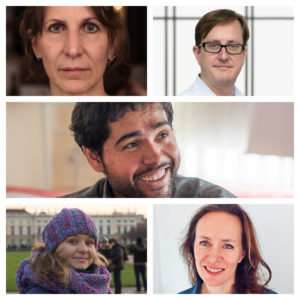 Panelists:
Panelists:
- Joey Orr, Curator for Research at the University of Kansas Spencer Museum of Art (Moderator)
- An Interdisciplinary team comprised of: video artist Janet Biggs, mathematician Agnieszka Międlar, and physicist Daniel Tapia Takaki
- Mónica Bello, Head of Arts at CERN
Each art-science collaboration has its own disciplinary makeup, objectives, and ways of working. At the same time, these collaborations are embedded in ecologies of professional relationships, funding, and institutional structures. a2ru Ground Works explores art-sci experiences at both the team and institutional levels in a 75-minute panel discussion.
At the interdisciplinary team level, we wonder: what do artists and scientists hope to get out of their shared research? What are their working methods? What are their outcomes? What can they accomplish together that they couldn’t alone? In a 2020 Ground Works panel discussion, we asked questions like these of an art-sci team from IARI, the Integrated Arts Research Initiative at the Spencer Museum of Art. Now we’ll catch up with the team and see how their collaborative work has developed over the past year and a half.
We will also check in at the institutional level with the European Organization for Nuclear Research (CERN), an international center for scientific research, and their Arts at CERN program. Arts at CERN has established a Memorandum of Understanding with the Spencer Museum of Art through University connections to support the IARI team. We ask: what are the mechanisms of support for artists at KU and at CERN? What does institutional support enable, and what does it restrict?
Session Recording
Ground Works CERN-IARI Panel May 2022 from a2ru on Vimeo.
Panelists
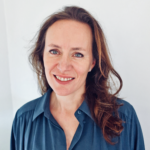 Mónica Bello (Santiago de Compostela, 1973) is a curator and art historian. In her curatorial work she focuses on the crossovers between disciplines. Since 2015 she holds the position of Curator and Head of Arts at CERN at the European Organization for Nuclear Research in Geneva. At CERN she leads and designs the art programmes consisting of artistic residencies, art commissions and exhibitions. In 2018 she was guest curator of the prestigious Audemars Piguet Art Commission, presented in Art Basel. Prior to her arrival to Switzerland she held the position of Artistic Director of VIDA (2010-2015) at Fundación Telefónica, Madrid, a pioneering award that fostered cross-cultural expressions around the notion of life. She initiated (2007-2010) the department of Education at Laboral Centro de Arte, Gijón (Spain). She has curated exhibitions, events and publications internationally supporting creators and researchers from different fields and backgrounds. Bello is a regular speaker at conferences and participates in selection committees, advisory boards and mentorship programs. She is the curator of the Icelandic Pavilion for the 59th Venice Biennale, working in collaboration with the artist Sigurður Guðjónsson.
Mónica Bello (Santiago de Compostela, 1973) is a curator and art historian. In her curatorial work she focuses on the crossovers between disciplines. Since 2015 she holds the position of Curator and Head of Arts at CERN at the European Organization for Nuclear Research in Geneva. At CERN she leads and designs the art programmes consisting of artistic residencies, art commissions and exhibitions. In 2018 she was guest curator of the prestigious Audemars Piguet Art Commission, presented in Art Basel. Prior to her arrival to Switzerland she held the position of Artistic Director of VIDA (2010-2015) at Fundación Telefónica, Madrid, a pioneering award that fostered cross-cultural expressions around the notion of life. She initiated (2007-2010) the department of Education at Laboral Centro de Arte, Gijón (Spain). She has curated exhibitions, events and publications internationally supporting creators and researchers from different fields and backgrounds. Bello is a regular speaker at conferences and participates in selection committees, advisory boards and mentorship programs. She is the curator of the Icelandic Pavilion for the 59th Venice Biennale, working in collaboration with the artist Sigurður Guðjónsson.
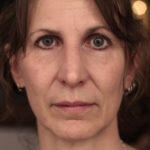 Janet Biggs is an interdisciplinary artist known for her immersive work in video, film and performance. Biggs’ work focuses on individuals in extreme landscapes or situations, and navigates territory between art and science. She has collaborated with neuroscientists, Arctic explorers, aerospace engineers, astrophysicists and a robot. Biggs has had solo exhibitions and film screenings at the Neuberger Museum of Art; SCAD Museum of Art; Blaffer Art Museum; Musee d’art contemporain de Montréal; Hirshhorn Museum and Sculpture Garden; Tampa Museum of Art, among others. Reviews of her work have appeared in publications including the New York Times, New Yorker, ArtForum, ARTNews and Art in America. Biggs’ research has been supported by the John Simon Guggenheim Foundation, the New York State Council on the Arts and the National Endowment for the Arts. Biggs is a member of the New Museum’s cultural incubator, NEW INC with the support of Science Sandbox.
Janet Biggs is an interdisciplinary artist known for her immersive work in video, film and performance. Biggs’ work focuses on individuals in extreme landscapes or situations, and navigates territory between art and science. She has collaborated with neuroscientists, Arctic explorers, aerospace engineers, astrophysicists and a robot. Biggs has had solo exhibitions and film screenings at the Neuberger Museum of Art; SCAD Museum of Art; Blaffer Art Museum; Musee d’art contemporain de Montréal; Hirshhorn Museum and Sculpture Garden; Tampa Museum of Art, among others. Reviews of her work have appeared in publications including the New York Times, New Yorker, ArtForum, ARTNews and Art in America. Biggs’ research has been supported by the John Simon Guggenheim Foundation, the New York State Council on the Arts and the National Endowment for the Arts. Biggs is a member of the New Museum’s cultural incubator, NEW INC with the support of Science Sandbox.
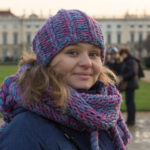 Agnieszka Międlar is an Associate Professor of Mathematics at the University of Kansas. Her research lies in the general area of numerical linear algebra, numerical analysis for partial differential equations and scientific computing, with a focus on iterative solvers for large-scale linear systems and eigenvalue problems, and adaptive finite element methods. Dr. Międlar conducts research in a range from theoretical investigations to developing computational methods of practical relevance. Her research is highly interdisciplinary. She collaborates with colleagues from other areas of mathematics, natural sciences and engineering to develop advanced algorithms to solve complex real-life problems of global importance. Her most recent research is strongly motivated by emerging numerical linear algebra challenges in computational quantum chemistry and materials science, and the rapidly changing landscape of traditional high-performance computing environments. Dr. Międlar holds a M.Sc.Eng. in Computer Science from the Wroclaw University of Technology and PhD in Mathematics from the Technical University of Berlin. She is an IARI Faculty Fellow at the Spencer Museum of Art at the University of Kansas.
Agnieszka Międlar is an Associate Professor of Mathematics at the University of Kansas. Her research lies in the general area of numerical linear algebra, numerical analysis for partial differential equations and scientific computing, with a focus on iterative solvers for large-scale linear systems and eigenvalue problems, and adaptive finite element methods. Dr. Międlar conducts research in a range from theoretical investigations to developing computational methods of practical relevance. Her research is highly interdisciplinary. She collaborates with colleagues from other areas of mathematics, natural sciences and engineering to develop advanced algorithms to solve complex real-life problems of global importance. Her most recent research is strongly motivated by emerging numerical linear algebra challenges in computational quantum chemistry and materials science, and the rapidly changing landscape of traditional high-performance computing environments. Dr. Międlar holds a M.Sc.Eng. in Computer Science from the Wroclaw University of Technology and PhD in Mathematics from the Technical University of Berlin. She is an IARI Faculty Fellow at the Spencer Museum of Art at the University of Kansas.
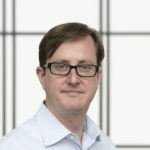 Joey Orr is the Andrew W. Mellon Curator for Research at the Spencer Museum of Art at the University of Kansas, where he directs the Integrated Arts Research Initiative (IARI) and is affiliate faculty in Museum Studies and Visual Art. Previously he served as the Andrew W. Mellon Postdoctoral Curatorial Fellow at the Museum of Contemporary Art Chicago, where his major project aligned three exhibitions around artistic research. Recent writing has been published in Art Papers, Art Journal Open, BOMB, Hyperallergic, Journal for Artistic Research (Network Reflections), and Sculpture. Juried writing has been published by Antennae, Art & the Public Sphere, Images, Journal of American Studies, PARSE, QED, Visual Methodologies, a chapter in the volume Rhetoric, Social Value, and the Arts (Palgrave Macmillan), and a forthcoming book, A Sourcebook of Performance Labor for Routledge Press. He holds an MA from the School of the Art Institute of Chicago and a PhD from Emory University and currently serves on the editorial board for Ground Works.
Joey Orr is the Andrew W. Mellon Curator for Research at the Spencer Museum of Art at the University of Kansas, where he directs the Integrated Arts Research Initiative (IARI) and is affiliate faculty in Museum Studies and Visual Art. Previously he served as the Andrew W. Mellon Postdoctoral Curatorial Fellow at the Museum of Contemporary Art Chicago, where his major project aligned three exhibitions around artistic research. Recent writing has been published in Art Papers, Art Journal Open, BOMB, Hyperallergic, Journal for Artistic Research (Network Reflections), and Sculpture. Juried writing has been published by Antennae, Art & the Public Sphere, Images, Journal of American Studies, PARSE, QED, Visual Methodologies, a chapter in the volume Rhetoric, Social Value, and the Arts (Palgrave Macmillan), and a forthcoming book, A Sourcebook of Performance Labor for Routledge Press. He holds an MA from the School of the Art Institute of Chicago and a PhD from Emory University and currently serves on the editorial board for Ground Works.
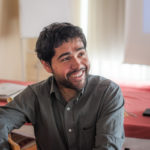 Daniel Tapa Takaki is a high-energy nuclear physicist and associate professor of physics at the University of Kansas. He has worked for the ALICE and CMS collaborations at the CERN’s Larger Hadron Collider, studying strong gluon fluctuations in the proton and lead nuclei to understand Quantum Chromodynamics and to determine the initial state of ultra-relativistic protons and ions at high energies. For his research he has utilized the strong electromagnetic fields produced in multiperipheral collisions instead of ordinary hadronic collisions. More recently, he has studied applications of quantum mechanics in collider physics, including quantum tomography, to measure quantum entanglement and other quantum mechanical effects which have the potential to falsify foundation postulates of quantum mechanics.
Daniel Tapa Takaki is a high-energy nuclear physicist and associate professor of physics at the University of Kansas. He has worked for the ALICE and CMS collaborations at the CERN’s Larger Hadron Collider, studying strong gluon fluctuations in the proton and lead nuclei to understand Quantum Chromodynamics and to determine the initial state of ultra-relativistic protons and ions at high energies. For his research he has utilized the strong electromagnetic fields produced in multiperipheral collisions instead of ordinary hadronic collisions. More recently, he has studied applications of quantum mechanics in collider physics, including quantum tomography, to measure quantum entanglement and other quantum mechanical effects which have the potential to falsify foundation postulates of quantum mechanics.
